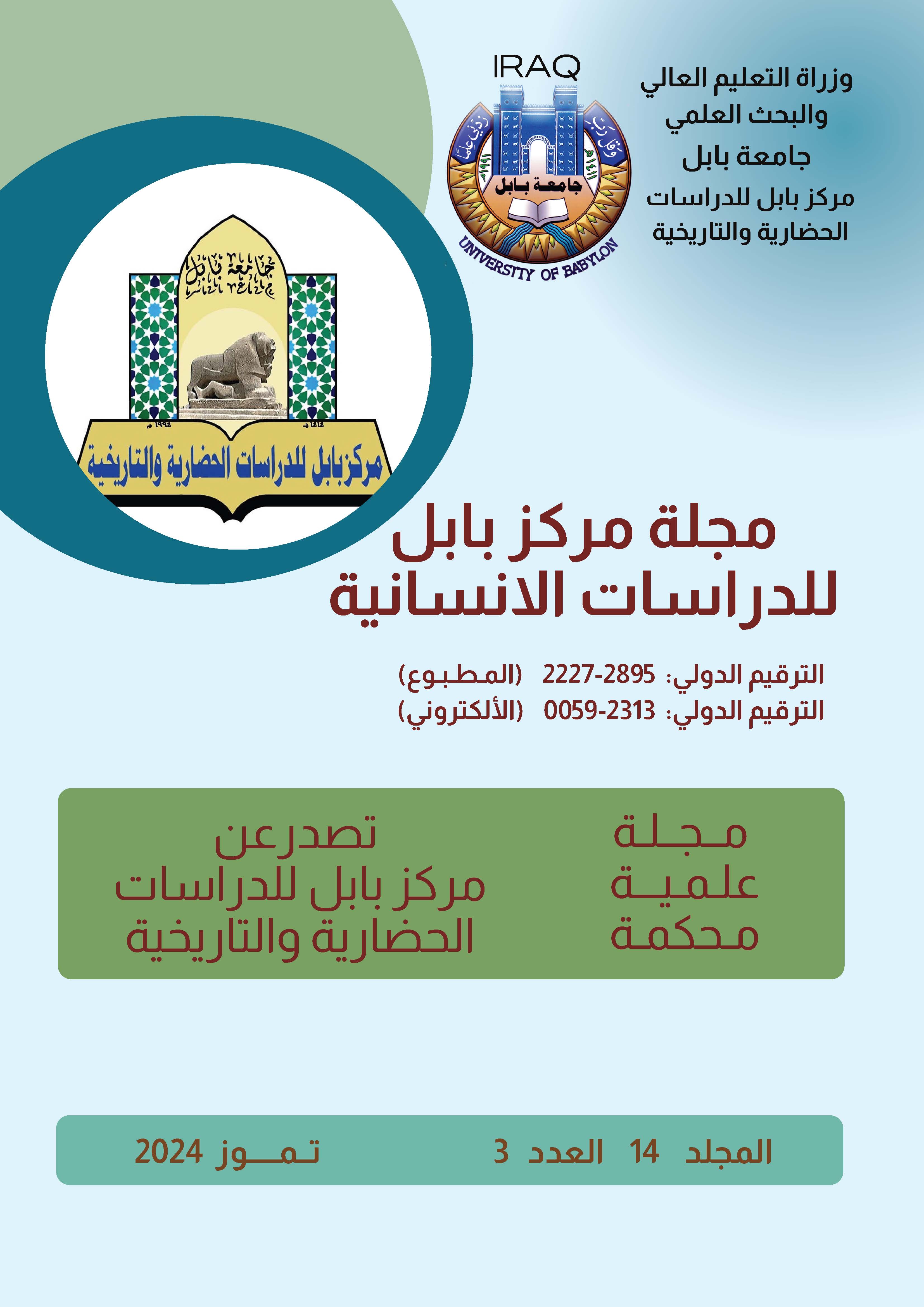The methods used in the Holy Qur’an to influence the addressee and persuade him according to Al-Zamakhshari
Keywords:
methods, the Holy Qur’an, the addressee, persuasion, Al-Zamakhshari.Abstract
The purpose of the Divine Revelation and the Holy Qur’an is to guide people through persuasion without coercion. The doctrine that is imposed by force is dispensed with with the passage of time and people forget it after the force majeure that imposed that doctrine weakened. The Holy Qur’an employs superior methods to persuade people, and God also taught His prophets methods that persuade the minds of the recipients and soften their hearts. Given that the persuasive method is one of the concepts that plays an important role in modern writings, due to its importance in the individual’s life and the acceptance of ideas, the current study was concerned with identifying the persuasive methods used by the Holy Qur’an, as Al-Zamakhshari explains in his interpretation of Al-Kashf. Since Al-Zamakhshari’s approach in his interpretation is a literary and rhetorical approach, and that what is presented in rhetoric - meanings, explanation, and the beautiful - is due to conveying what is intended to the addressee in the best and easiest way for him, then Al-Zamakhshari’s attempts to reveal the rhetorical subtleties in the Holy Qur’an reveal the aspects of the Holy Qur’an’s persuasion to his addressees. The current research first examines Al-Kashshaf for what has been explained in this matter and concludes that among the reasons for influencing the meanings of the Holy Qur’an in the hearts and influencing its addressees are what is due to the convincing method (such as moderation, neutrality, gradualness, and ease in explaining knowledge) and what is due to The method used For expression (such as finding an alternative, protesting according to the mentality of the addressee, and rhetorical types such as similes, repetition, detours, etc.). The current study, through detailed research in the book Al-Kashshaf, follows up on these methods and ultimately presents some brilliant examples of Al-Zamakhshari’s attempts to reveal the symbols of these methods, the subtleties of expressions, and their subtleties by explaining their persuasive aspect.







